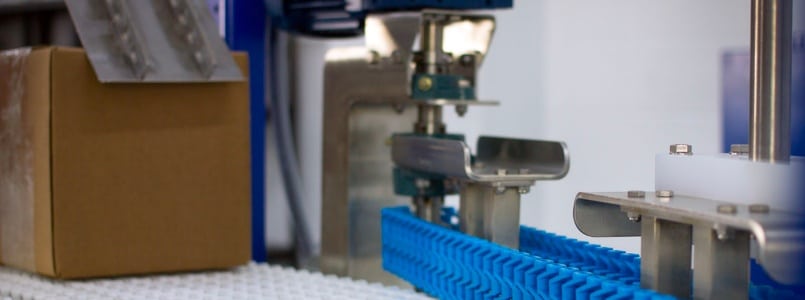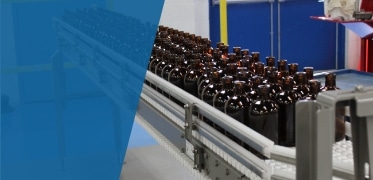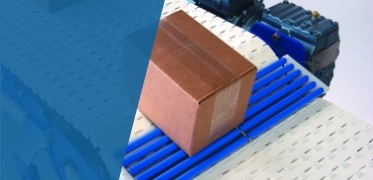The Benefits of a New Conveyor Sortation System
New conveyor sortation systems can do more than accommodate an additional product line or boost your current operations. A well-planned conveyor system design can provide a wide range of ancillary benefits, such as:
- Promoting shipping accuracy
- Increasing shipping frequency
- Improving productivity
- Decreasing labor costs
- Streamlining facility processes
- Reducing production costs
- Improving compliance with health and safety regulations
- Decreasing product damage
- Cutting waste
In the end, these all add up to increased customer satisfaction, something we all strive to achieve.
The benefits of a carefully planned conveyor sortation system are so widespread that it’s easy to see why conveyors are considered the arteries of any operation, reflecting both the importance and actual function of any conveying system. Because the benefits can be so wide-ranging, it’s useful to incorporate conveyor design early in your project’s budget and design process.
To reap the full benefits of a new conveyor sortation system, you should consider both short- and long-term goals. Choosing the wrong system can damage products, reduce efficiencies and undermine long-standing strategies.
The best conveyor design not only accounts for existing objectives but also accommodates future growth. Designing for scalability at the outset of your project ensures that it will be easier and less expensive to add features and components down the road. Set yourself up for continued success with a conveyor sortation system that’s been thought out from start to finish.

# 1: Throughput Requirements & Conveyor System Design
Consider the true throughput requirements for your conveyor sortation system to create a technical solution that will meet your needs. Decide on the trade-offs that make the most sense for your facility. For instance, faster throughputs often limit your design options while simultaneously increasing costs.
You should consider throughput requirements on a per-shift, per-hour and per-day basis. You’ll also want to factor in how many hours per day and how many days per week your operation will run, as well as expected cycle times. Frequent stops and starts need to be figured into your conveyor system design since they can require more robust motors.
The number of diverts actually required, as opposed to desired, is another crucial consideration — each divert will need to run at the determined throughput.
Designing in flexibility is essential. You need conveyors that can adapt to your entire production flow at an optimum rate of efficiency. Flow and speed control are critical elements of any good conveyor design.
#2: The Effect of Product Specifications on Conveyor Sortation Systems
Product specifications can affect your conveyor system design in a variety of ways. At the very least, you need to know the maximum, minimum and average number of products that will be processed. Other important considerations include:
- Product dimensions
- Product weight
- Load distribution
- Package orientation
You’ll also want to take into account product characteristics like fragility and sensitivity to temperature, as well as the product’s shape. Products with a hard, flat bottom, such as beer crates, have different conveying needs than softer items like bags of jelly beans.
Another factor in designing a conveyor sortation system is whether there are issues that add to the project’s complexity, like oversized or slow-running products. Could these be excluded to streamline the design?
Whether any of these conditions are random or consistent is essential to consider.
Don’t leave your conveyor system design to luck. Thorough product testing is vital to ensure you get the proper conveyor sorting system for your operation.
#3: How Layout Constraints Affect Conveyor Design
The layout of your plant has a direct impact on conveyor design. You need an accurate, well-documented floor plan of the facility that details:
- Column locations
- Electrical panels
- Overhead clearances
- Equipment aisleways
- Pedestrian walkways
- Dock door spans
Other layout constraints include logistics like where products are introduced into the system and where they need to be transported. For instance, a conveyor sortation system going directly to a truck trailer has different requirements than a system going to a separate staging area.
You’ll also need to consider whether the conveyor will operate indoors or outdoors. If the conveyor is outside, is the ground stable enough to support the structure?
Other factors include whether the products need to be conveyed to different levels and whether a gradual incline or vertical conveyor would work best. Your conveyor system design also needs to account for adequate drainage for products that leak and appropriate ventilation for products that emit fumes. Proper lighting is a requirement where manual operations are in use.
The environment the conveyor will run in is another consideration. Is it so cold that lubricants will thicken? So dusty that components will wear more quickly? So wet that rust will be an issue? And what if the conveyor has to maneuver through multiple environments? A bakery conveyor sortation system, for instance, may need to transport products through ovens and freezers, each area with its own requirements.
Trust Your Conveyor Sortation System Needs to Span Tech
Now that you know the top three factors to consider, it’s time to design a conveyor sortation system for your facility. Span Tech has years of conveyor system design experience, delivering unique, customizable, technical solutions for our customers. We embrace challenges and always seek to engineer conveyor sortation systems tailored specifically for your needs. Contact us today to learn more.














